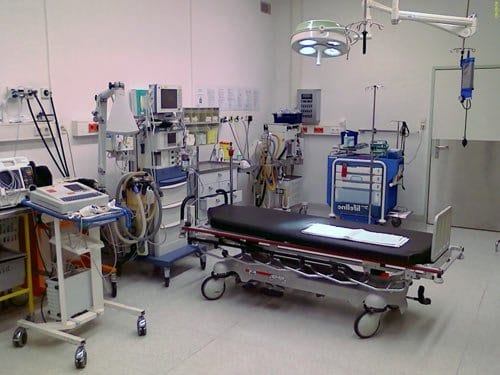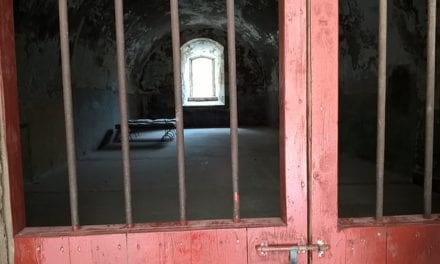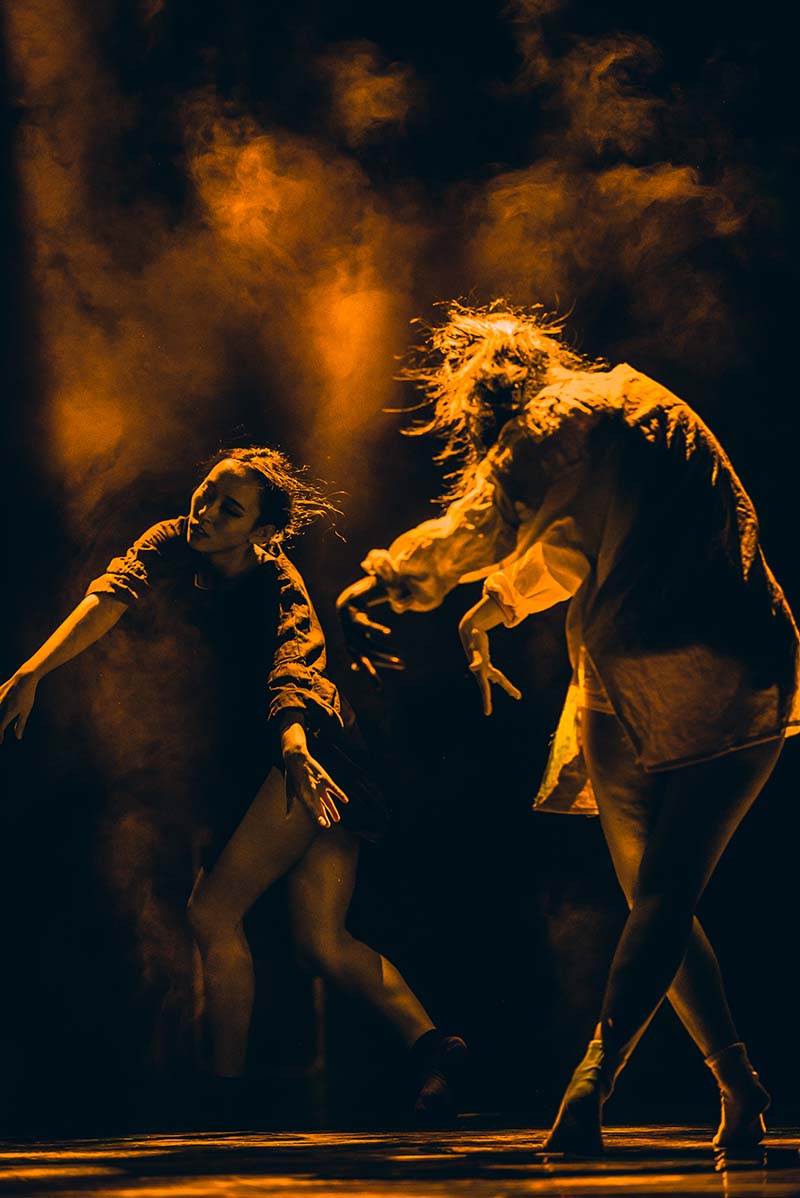We Will Never Forget You
Katie faints, falls down the steps, and breaks her wrist. In the news reports, her injury is counted among the others caused by the tragedy at the high school that day.
The night before, she is rattled out of her sleep, over and over, into cold sheets reeking of sweat. Too nervous to eat breakfast that morning, she walks to school in a low-blood sugar daze. It is October, and the sun has not yet burned off the hazy grey filter that veils the beige and white homes and auburn-leafed trees that line the road.
Today she is late, and the east entrance is deserted. Halfway up the steps, she collapses backwards. When she opens her eyes, she sees the overcast sky. The lockdown alert booms in her ears. She tries to push herself up until she feels a shooting pain chase up her left arm.
A squad of emergency medical technicians bursts through the school’s door, looking for victims. They assume Katie is one of them. They assess her pulse and breathing, and roll her body over, looking for a bullet wound.
The EMTs lift her onto a stretcher and carry her into an ambulance. She can’t see out any windows but can feel the ambulance accelerating. She can hear the siren and a ceiling vent blows hot, dry air into her face.
“Can you hear me?” an EMT asks.
“My wrist. It hurts.”
“Can you wiggle your fingers for me? What do you remember?”
“I think I fell.”
The tech begins to splint her wrists and then applies an ice pack. “Huh. You aren’t bleeding and we couldn’t find any entry points. We’re taking you in for an assessment anyway.”
Katie can feel a pulse inside her swollen wrist pressing against the splint, and the tech gives her a pill for the pain. But that pain is pushed aside by a calm euphoria.
She will not have to give the speech today. The speech that made her heart stop when she saw it on the syllabus at the beginning of the semester. The speech she refused to give twice already. Mr. Davenport insisted that she would get no better than a “D” in his communications class if she ditched school on the day she was scheduled to speak. “D” for damned, her chances at becoming valedictorian and fulfilling the expectations of her family and herself. She needed an “A” in what was an easy class, apart from a two minute speech on American history.
Lost in the ambulance’s lunging lane changes and awash in the catharsis of her unexpected respite, she smiles.
“You having trouble breathing? I’m going to give you some oxygen, okay? Hold still.” The tech puts a non-rebreather mask over Katie’s nose and mouth and slips a strap behind her head. “Better?” he asks.
Katie feels better than she has in days. When they arrive at the hospital, the EMT who tied the splint consults with a triage nurse. “Just a sprained wrist, best I can tell.”
She is wheeled to a spot in a hallway, and another nurse brings her a cup of water and blanket. She can hear a television nearby.
We interrupt the Price is Right with some unfortunate news. An armed individual opened fire at Andrews High School this morning. We are now aware of at least eight fatalities and twenty-five others who were injured and are being treated at hospitals throughout the metro region. Among the fatalities is the alleged shooter who we are told turned the gun on himself when cornered by police.
Katie sits up and takes a sip from her cup as a gurney ushered by two men and two women in white coats approaches. One of them is holding up a bag of fluid. They are running and shouting at each other. As they race by, Katie sees a face that she recognizes, covered in blood.
Katie first met Allie in kindergarten. They were “cubby buddies,” sharing one of the wooden supply boxes that lined the open classroom’s wall. In middle school, they were among a clique of girls who had sleepovers and traded gossip and future plans of fame, wealth, and celebrity marriages.
In high school, differing schedules and diverging interests separated them. Allie was on the cheer squad and ran cross-country, while Katie was absorbed by college-prep and advanced placement classes. They still found occasions to get together, and the two of them would laugh over the desperate, clichéd poems that boys would slip into their lockers.
Katie watches Allie’s gurney disappear around the corner.
The next day, the news reports confirm the names of the dead. Allie is on the list, along with two other girls from their old clique. Three days later, the community holds a memorial service. Katie attends with her parents. She hasn’t eaten anything since the night before the shooting and passes out again.
Two weeks later, classes resume at an unused elementary school with several dozen additional classrooms set up in trailers. Surviving members of the girls’ and boys’ cross country teams pledge to win the state championship for their fallen teammates. Some students form a club to petition the state to ban firearms. Other students form a club to advocate for arming teachers.
The students most affected by the shooting are assigned grief counselors by the school district. At her first and only session, Katie says nothing, shrugging and staring at the floor when the counselor asks how she feels.
In each classroom, the homeroom students make a memorial for their dead peers. In the mornings, a loud, universal cheer erupts throughout the school as the principal announces over the PA system the names of the injured students who are returning to regular attendance that day.
Katie’s is failing all of her classes. Her parents hire a tutor and a psychotherapist. The psychiatrist prescribes pills Katie refuses to take. Her mother, noticing how poorly Katie’s clothes are fitting, makes her stand on a scale. Eight-eight pounds. Katie is five-foot six. Her mother schedules an appointment with a nutritionist.
A poster sponsored by the student government titled “We Will Never Forget You,” with class photos of each victim, is plastered throughout the hallways. Every student is given a copy.
Katie is admitted to a psychiatric hospital after her mother discovers slash marks on her wrists.
Katie does not speak to anyone there, communicating in hushed monosyllables and slow head motions, but she begins to regain weight on a diet of Pedialyte.
For ten months, she keeps to herself, looking for patterns in the blue dots on the wallpaper that insulates the institution’s patients from the outside world. Group therapy sessions at the hospital are not optional, though Katie remains silent, zoning out among the blue dots as other patients take turns picking at old scabs.
At the end of summer, Katie is on a bus returning to the hospital after a field trip to a park. The bus passes by her old high school, which has re-opened. Class is letting out for the day. A traffic guard wearing a bright orange vest holds up a sign and the bus stops in front of the campus’ east entrance.
The bright primary colors of the students’ clothes are radiant in the afternoon sun. The roar of adolescent voices rises and ebbs and rises. Liberated by the final bell, the students spread apart and collect together in conversation and physical interaction. A group of girls in sweats tries to stack themselves into a pyramid. A few boys are playing a game of football in casual formation.
The traffic guard lowers his stop sign. The bus’s hydraulic brakes release with a loud hiss, and the bus trundles forward, back to the hospital.
That evening is group therapy. At the end of session, the facilitator asks if anyone has any final thoughts to share. Katie stands up. The facilitator smiles encouragement while her eyes shout trepidation.
“Katie is going to share! Everyone, be quiet. We’re ready when you are. Don’t be afraid, hon.”
Katie speaks. Quiet at first, with each word her volume increases until her voice fills the room.
“The Declaration of Independence is an important document in America’s history. It represents the beginning of America as a country, and also contains the ideas that became the basis of our government. It was written by Thomas Jefferson and then signed by fifty-six representatives at the Continental Congress in Philadelphia on July 4, 1776. In making the case for independence from the British Empire, the Declaration expresses the values of self-government and individual liberty.”




















